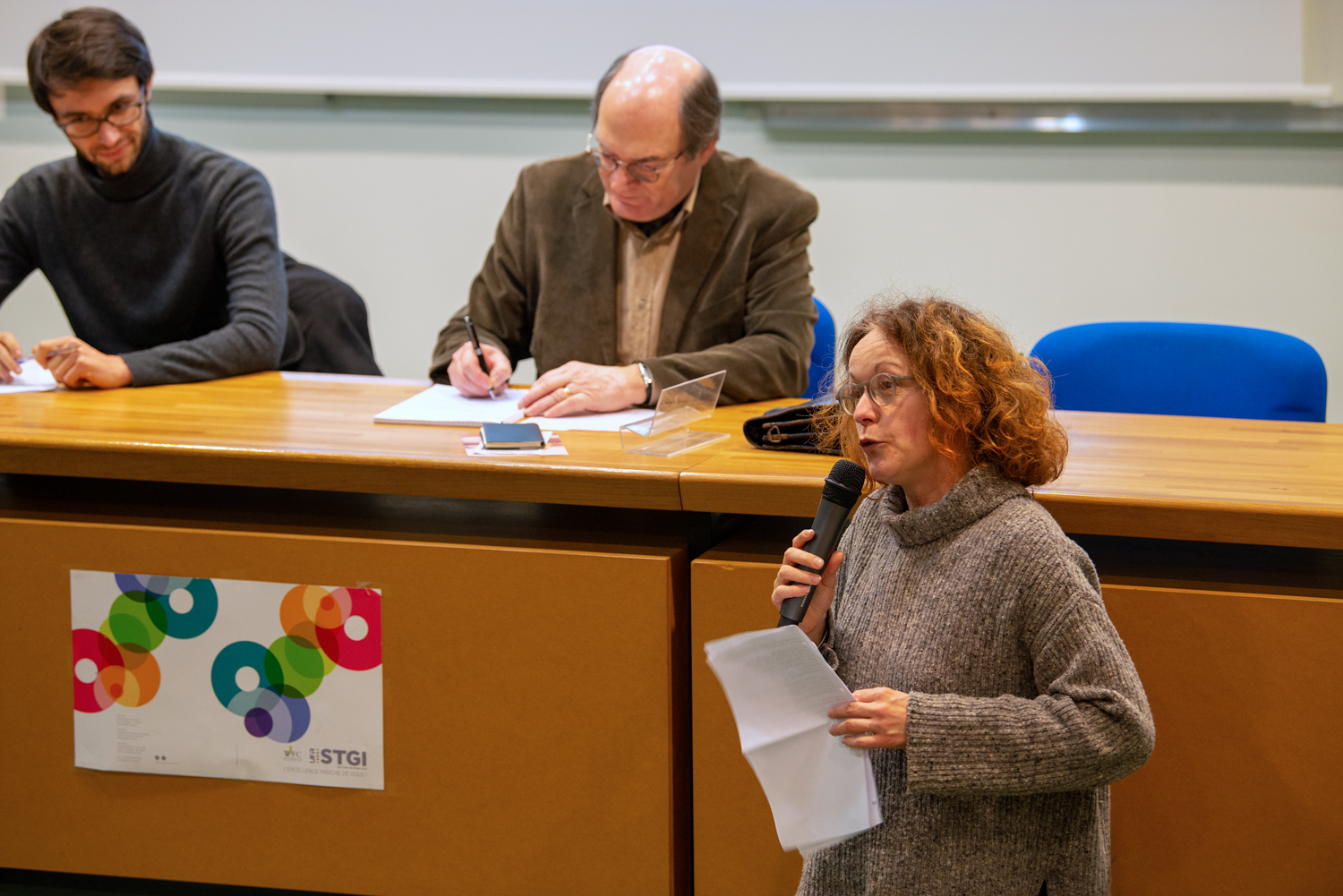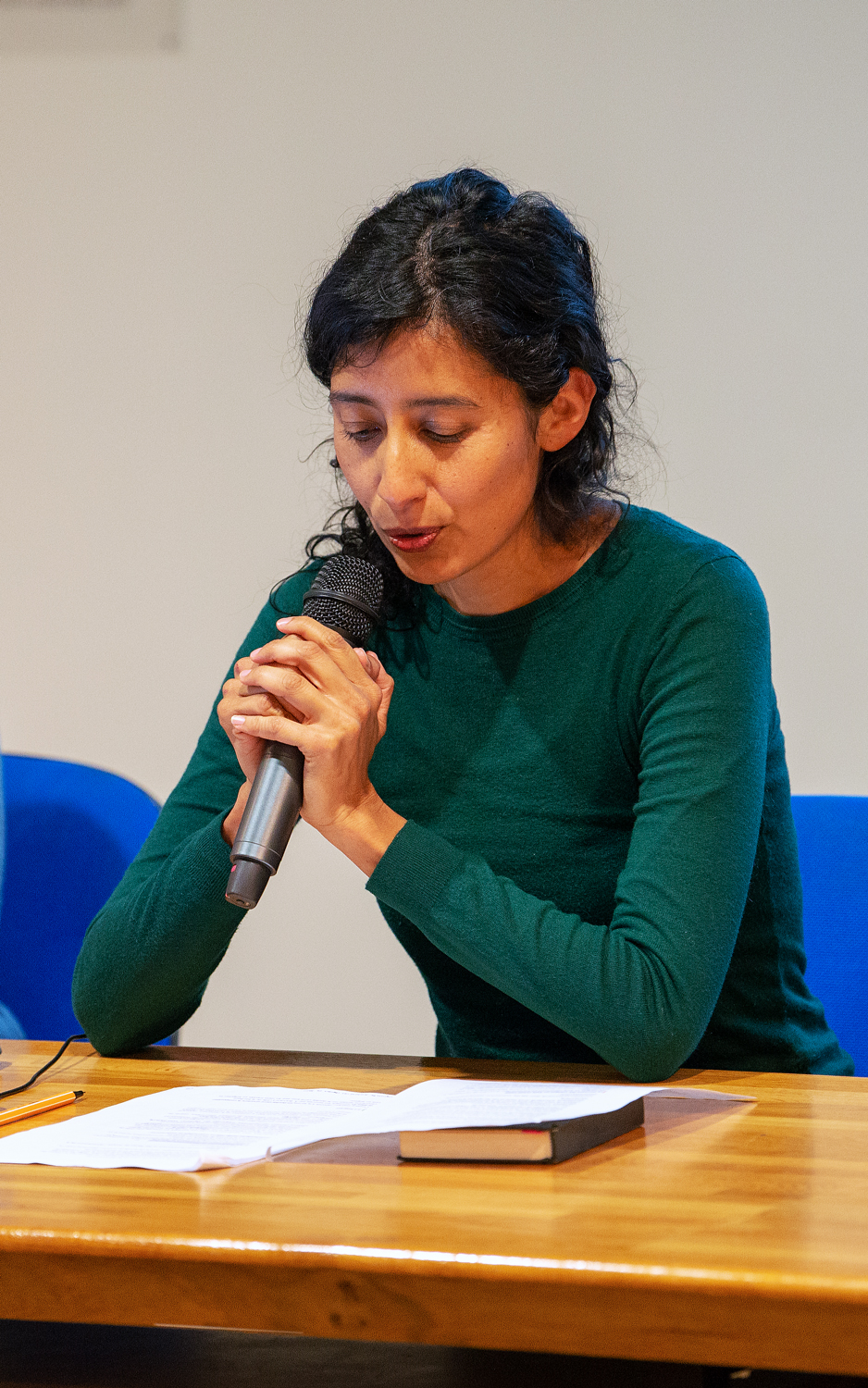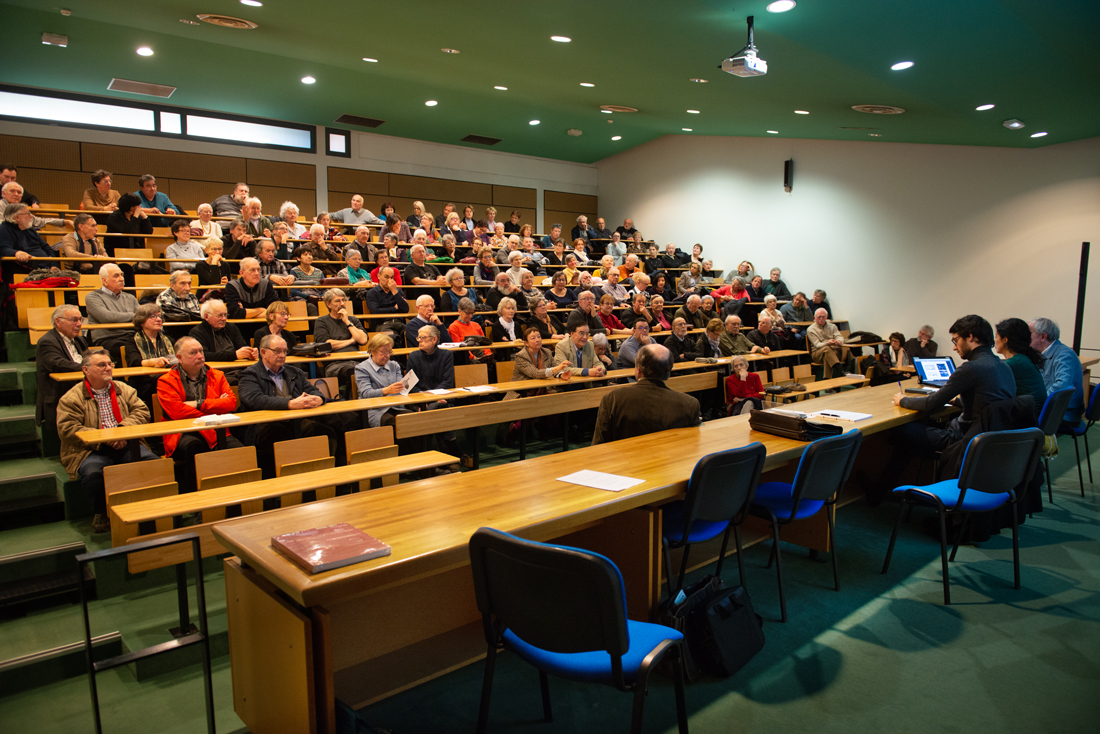La redécouverte des décors intérieurs du temple Saint-Martin de Montbéliard :
15 février 2020
La redécouverte des décors intérieurs du temple Saint-Martin de Montbéliard :
apport à la connaissance de l'œuvre d'Heinrich Schickhardt (1558 - 1635),
Conférence par : Matthieu FANTONI, Gabriela GUZMAN, et André BOUVARD.


 Ci-contre : André BOUVARD
Ci-contre : André BOUVARD
 Ci-contre : Gabriela GUZMAN
Ci-contre : Gabriela GUZMAN

Ci-contre : Matthieu FANTONI. 
CONFERENCE DE LA SOCIETE D’EMULATION SUR LE TEMPLE SAINT MARTIN
Terre francophone, appartenant à l’Empire germanique, le comté de Montbéliard adopte la Réforme dans le second quart du XVIe siècle, après une première tentative avortée (1624), proche de la révolte de Luther contre la papauté (1517). Après l’Interim, un retour au catholicisme imposé par l’empereur, ses comtes rétablissent le luthéranisme. Dès 1560, les guerres de religion déclenchent un afflux de réfugiés huguenots adeptes du calvinisme à Montbéliard. En 1586, leur nombre représente 15% de la population locale. Le luthéranisme est contesté. La même année, un colloque entre luthériens et calvinistes ayant échoué, le prince Frédéric de Wurtemberg impose le luthéranisme comme religion d’Etat. Le plafond de l’hôtel du Lion Rouge peint vers 1582 témoigne de l’adoption de la Réforme à Montbéliard. Les scènes représentées sont empruntées à l’iconographie protestante. Elles sont associées à de très courts textes bibliques.
Bâti de 1601 à 1607 par l’architecte Heinrich Schickhardt sur ordre du duc Frédéric de Wurtemberg, le temple Saint-Martin est aujourd’hui le plus ancien lieu de culte protestant conservé en France, tous les autres temples (Charenton, La Rochelle, Lyon…) ayant été détruits sous Louis XIV, un peu avant la révocation de l’édit de Nantes (1685)
L’édifice est construit à l’issue d’un long voyage dans la moitié nord de l’Italie, au cours duquel le prince et l’architecte s’intéressent aux édifices de la Renaissance et de l’antiquité romaine. Il reprend le plan de la basilique romaine antique, le double carré, et s’inspire du décor extérieur des églises italiennes du XVIe siècle : ordre colossal, frontons courbes et triangulaires brisés.
Intérieurement le temple ne montre presque plus rien de son état d’origine, à l’exception du plafond à caissons qui remonte à l’époque de la construction. La grande rénovation entreprise dans la première moitié du XIXe siècle en a modifié l’organisation et le décor. Le sondage opéré en 2019 dans une travée test a permis de retrouver les décors peints initiaux, ceux que signalaient les comptes de construction qui ont été intégralement conservés. Il s’agit d’une reproduction en trompe-l’œil des décors extérieurs, frontons courbes et triangulaires, que l’on retrouve aussi dans la niche derrière l’autel que surmontait un décor en coquille. Les couleurs choisies sont le bleu, le noir, la couleur pierre et le blanc de chaux. Au niveau de l’entablement, sous la couche de plâtre, est apparu un chapiteau de pierre identique aux chapiteaux de la façade extérieure. Les grattages au plafond ont permis de retrouver deux couleurs d’origine : l’or et le gris-pierre. Mais les autres décors sont masqués par une épaisse couche de plâtre.
Ces décors très originaux, voire uniques par leur sobriété, soulignent encore plus l’intérêt de cet édifice représentatif de l’architecture protestante du début du XVIIe siècle. Comme le souligne le pasteur Cucuel dans son sermon de 1607, ils marquent la volonté de s’opposer à l’ostentation des églises catholiques et de concentrer l’attention des fidèles sur l’essentiel : la Parole de Dieu. Ils posent aussi la question des influences, les décors de Saint-Martin étant par leur austérité plus proches des idées de Calvin que de celles de Luther.
Le financement de la rénovation de l’intérieur du temple est désormais en grande partie assuré grâce à des subventions et à des aides, dont celle de la mission Bern. Les travaux devraient commencer dans le courant de l’année 2021. Ils englobent l’électricité, le chauffage et la restauration du mobilier. Les églises contemporaines de notre temple :
- Eglise de Freudenstadt (Bade-Wurtemberg) : début des travaux : 1601, achèvement : 1615, destruction partielle par le bombardement de 1945.
- Eglise de Dieffenbach (Bade-Wurtemberg) : les décors datent de 1621
- Eglise de Pfaffenhoffen (Bade-Wurtemberg)
- Eglise de Sulzbach (Bade-Wurtemberg) : décors catholiques XIVe s., protestants XVIe, XVIIIe, XIXe siècles.
Dans ces édifices, les fresques sont souvent associées à des textes bibliques.
Texte rédigé avec l’aide de la bibliothèque de Bart.
Conférence suivante : le samedi 21 mars 2020 !
-----
English translation by (traduction en anglais par) : Martin PETROWSKY
As a French speaking region belonging to the Holy Roman Empire, the County of Montbéliard adopted the Reformation during the second quarter of the 16thcentury, after a first aborted attempt in 1642, close to Luther’s rebellion against the papacy in 1517. After the Augsburg Interim, which ordered the readoption of Catholicism by Emperor Charles V, the counts of Montbéliard reinstated Lutheranism. From 1560, religious wars caused an influx of Calvinistic Huguenot refugees arriving to Montbéliard. In 1586, they represented 15% of the local population. Lutheranism was contested. The same year, a symposium between Lutherans and Calvinists failed, and Frederick I, Duke of Württemberg, imposed Lutheranism as state religion. The ceiling of the Hôtel du Lion Rouge(Hotel of the Red Lion), painted around 1582, is a testimony of the adoption of the Reformation in Montbéliard. The depicted scenes are borrowed from Protestant iconography, and are associated to very short biblical texts.
The temple Saint-Martin, or St Martin’s church, was built between 1601 and 1607 by architect Heinrich Schickhardt, at Frederick I’s command. It is nowadays the eldest Protestant place of worship in France, all the other churches (in Charenton, La Rochelle, Lyon…) having been destroyed under the reign of Louis XIV, shortly before the revocation of the Edict of Nantes in 1685.
The edifice was constructed after a long journey in the north of Italy, during which the duke and the architect took an interest in the buildings of the Renaissance and Ancient Rome. Schickhardt reused the plan of ancient Roman basilicas, the double square, and drew his inspiration from the outside ornamentations of Italian churches of the 16thcentury: giant order, curved and broken pediments.
Inside, the church looks nothing like its original state, except from the coffering on its ceiling, which dates back from the construction period. The great renovation undertaken in the first half of the 19thcentury modified both structure and ornamentation. A sounding carried out in 2019 inside one of the bays enabled to discover the original paintings, those indicated on the expenses of the construction work, which have been entirely preserved. They figure a trompe-l’oeil reproduction of the outside decoration, curved and triangular pediments, that are also found in the niche behind the altar, topped by a shell-shape pattern. The chosen colours were blue, black, stone-grey and whitewash. Near the entablature, under the layer of plaster, appeared a stone capital identical to the capitals of the exterior façade. Scratching of the ceiling allowed to discover two original colours: gold and stone-grey. Other decorations remain concealed behind a thick layer of plaster.
These very original ornamentations, almost unique by their sobriety, emphasise even more the interest of this building, typical of Protestant architecture of the beginning of the 17thcentury. As Pastor Cucuel pointed out in a sermon in 1607, they underline the will to differ from the ostentation of Catholic churches and to focus the attention of the flock on the most important aspect of religion: the Word of God. They also challenge the question of influences, as the austerity of the decorations of St Martin’s church is closer to Calvin’s ideas than Luther’s.
The financing of the restoration of the interior of the building is now for the most part assured thanks to grants and aid, among which the Mission Bern, which contributes to the protection of endangered French heritage and monuments. Renovation work should start over the course of 2021, and will cover electricity, heating, and furniture.
Several churches, located in different towns in Baden-Württemberg, Germany, are contemporary of St Martin’s church:
- Freudenstadt’s church: construction started in 1601, finished in 1615; partially destructed by the 1945 bombings.
- Dieffenbach’s church: the decorations dates back from 1621.
- Pfaffenhoffen’s church.
- Sulzbach an der Murr’s church: Catholic decorations from the 14thcentury, Protestant from the 16th, 18thand 19thcenturies.
In these buildings, frescoes are often associated with biblical texts.
